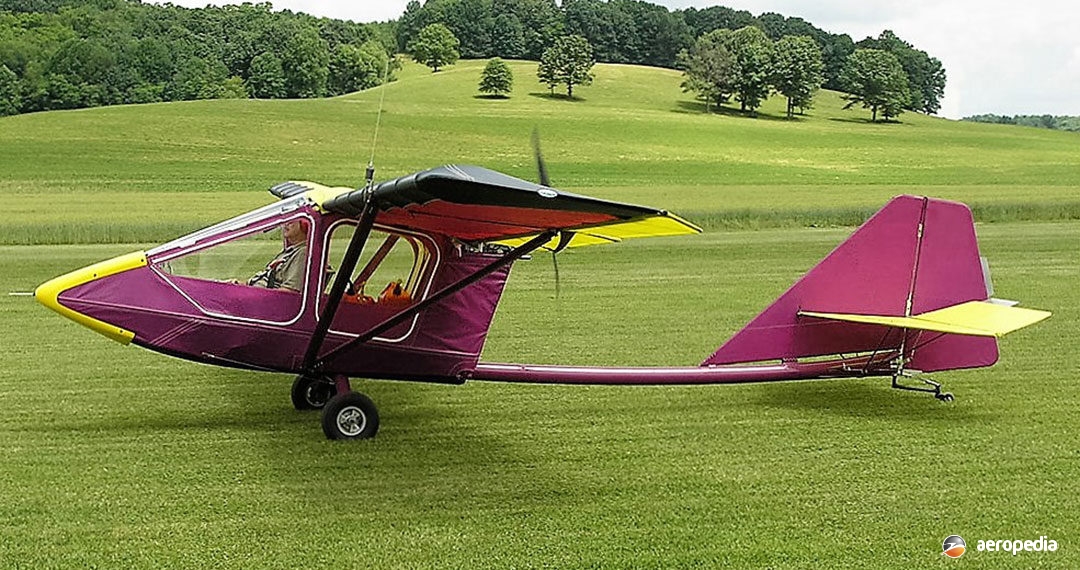Photograph:
CGS Aviation Hawk Arrow (T Shepherd)
Country of origin:
United States of America
Description:
Two-seat light sport aircraft
Power Plant:
(Hawk II Classic)
One 39 kw (52 hp) Rotax 503UL-2V two-cylinder, two-stroke, fan cooled engine with electronic ignition
Specifications:
- Wingspan: 10.36 m (34 ft)
- Length: 6.52 m (21 ft 4 in)
- Wing area: 14.77 m² (159 sq ft)
- Max speed: 153 km/h (95 mph)
- Cruising speed: 113 km/h (70 mph)
- Stalling speed: 56 km/h (35 mph)
- Rate of climb: 335 m/min (1,100 ft/min)
- Service ceiling: 3,658 m (12,000 ft)
- Range: 290 km (180 miles)
- Fuel capacity: 19 litres (4.1 Imp gals)
- Empty weight: 154 kg (340 lb)
- Loaded weight: 363 kg (800 lb)
History:
The Hawk series of light aircraft was designed by CGS Aviation Inc of Broadview Heights, Ohio, formerly known as Chuck’s Glider Supplies, the first machine being made available in 1980, as a single-seat light sport aircraft which could be made available in kit form. It was designed as a three-axis aeroplane and two prototypes were built and tested up to 200 hours each before any were sold. Construction was of anodised aluminium tubing and gussets were held together with pop rivets. It had a wide undercarriage to allow for greater crosswind capability (37 km/h – 23 mph). The kit came with wings, horizontal and vertical stabilisers, elevator and flaps already constructed.
It was said the Hawk changed the profile of the ultralight world. It was designed by Mr C Slusarczk, and it integrated conventional and low speed aerodynamics. It had a double-surfaced aerofoil and four position flaps to assist with flight from small airfields. The three axis control was via a joystick controlling ailerons and elevator, along with a pedal-operated rudder. The cockpit was enclosed and it was usually powered by engines in the Rotax series. Stall and spin resistant characteristics were designed into the aircraft.
The prototype was flown in January 1982 and made its debut at the Sun ‘n Fun Air Show at Lakeland, Florida in March 1982. At this time it was the first ultralight to have a fully enclosed cockpit, strut bracing and three axis control.
The type was produced in a number of models, and a number have been built in this region. It was available in single-seat and two-seat form, and models marketed included: Hawk Classic in single and two-seat variants; Hawk Arrow in single and two-seat variants; Hawk Plus, Hawk Sport and Hawk Ultra, all single-seat models.
The Arrow series was initially designed as an updated version of the Hawk Classic, incorporating a longer nose section, a flatter floor section, increased rudder and vertical stabiliser area, and a reinforced tail boom.
The Ag-Hawk was a variant designed for agricultural use and had a Rotax 582 engine and crop-spraying equipment.
Engines fitted to the series have included the Rotax 447, 503 or 582 units and Hirth 2703 or 2706 units. It could be fitted with a tailwheel or tricycle undercarriage, and examples have been fitted with floats.

